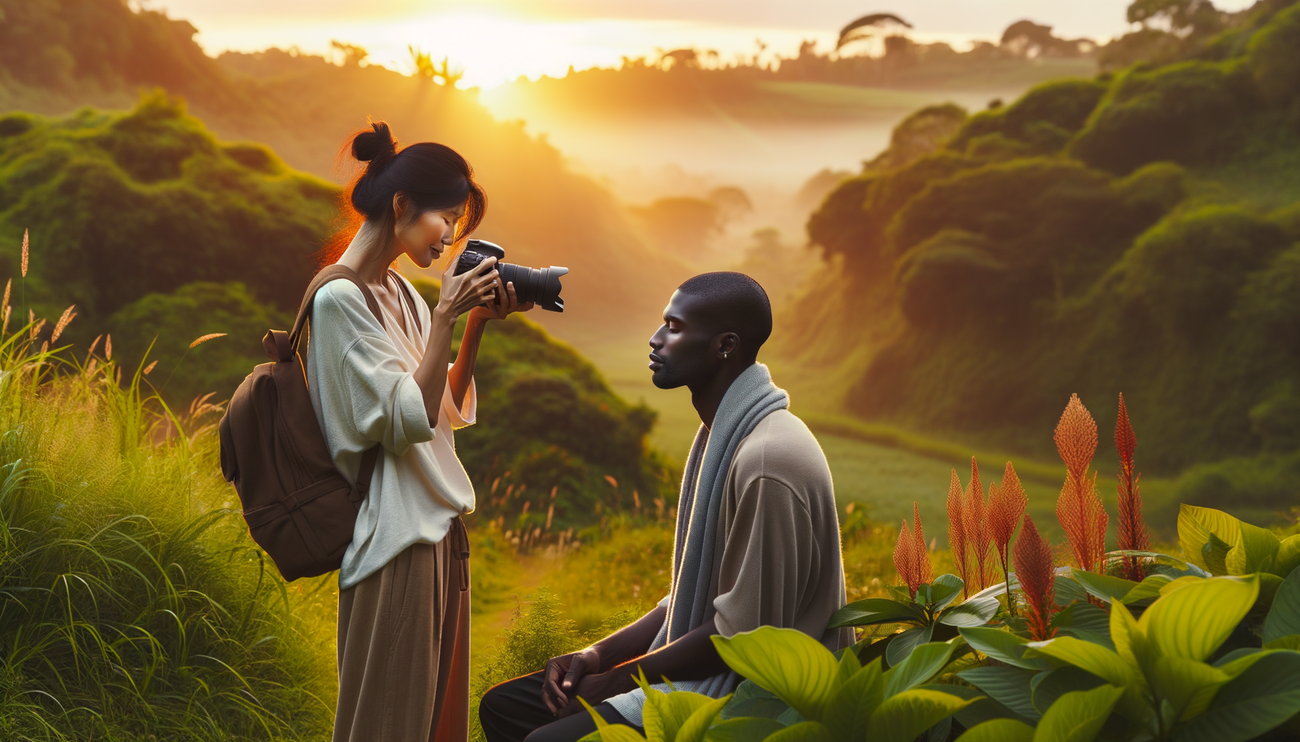
Organizing an outdoor photoshoot is not just a matter of experience, but an art form. Many photographers, whether beginners or professionals, strive to capture the beauty of the surrounding world in their photographs. In this article, we will unveil the secrets that will help you successfully conduct an outdoor shoot, covering all crucial aspects — from choosing the location and time for shooting to working with the model and lighting.
The first thing to consider when planning an outdoor photoshoot is choosing the right location. Nature offers a variety of settings, and your task is to find one that aligns with your style and shoot's concept. Think about the atmosphere you want to convey. A forest, a lake shore, or mountain peaks — each of these landscapes offers unique creative opportunities.
Once you've chosen a location, timing is crucial. The quality of light is a key moment in photography. The soft light of early morning or sunset, known as the golden hour, gives photographs a special warmth and depth. Avoid shooting at noon, when harsh sunlight can create strong shadows and ruin your image.
Equally important is preparing your model. If you are working with a professional, make sure they understand the concept and style of the shoot. If the model is new, give them guiding tips to help them feel comfortable and confident in front of the camera. Good communication with your model is essential for a successful outcome.
When shooting outdoors, consider the weather conditions. Go into your shoot knowing that the weather can change. Have a backup plan in case of rain or strong winds. Use elements like umbrellas or ponchos to shield from unpredictable weather.
After organizing the location, timing, and model, think about the composition of your shots. Nature provides many elements that can enhance your image, such as paths, trees, stones, and even people in the background. Experiment with different shooting angles and object sizes to create dynamic and interesting frames.
Also, use the natural surroundings to complement your theme. For instance, if you're shooting portraits against a natural backdrop, try incorporating elements that tell a story and add depth. Leaves or flowers can make for interesting accents within the frame.
Don’t forget about technique. Utilize the wide dynamic range of your camera to capture details in both the light and dark areas of the sky. Sometimes using polarizing filters can help reduce glare and enhance contrast, ultimately leading to better images.
After the shoot, focus on post-processing. This is the final step that makes your shots unique and expressive. Use photo editing software to improve colors, lighting, and add your distinctive touch to each photo.
In conclusion, an outdoor photoshoot can be a remarkable experience if you pay attention to details. Combine your vision, knowledge, and creativity to create unforgettable images that will delight you and your clients. Good luck in your creativity!


